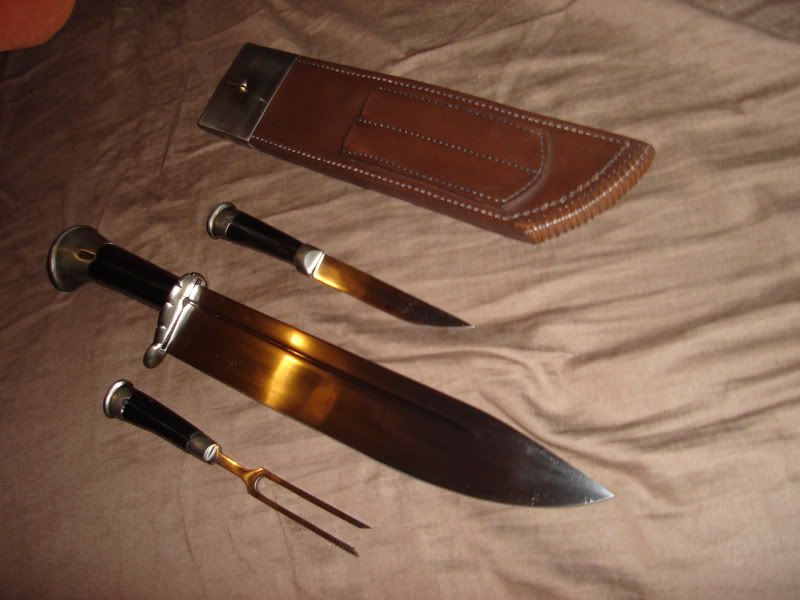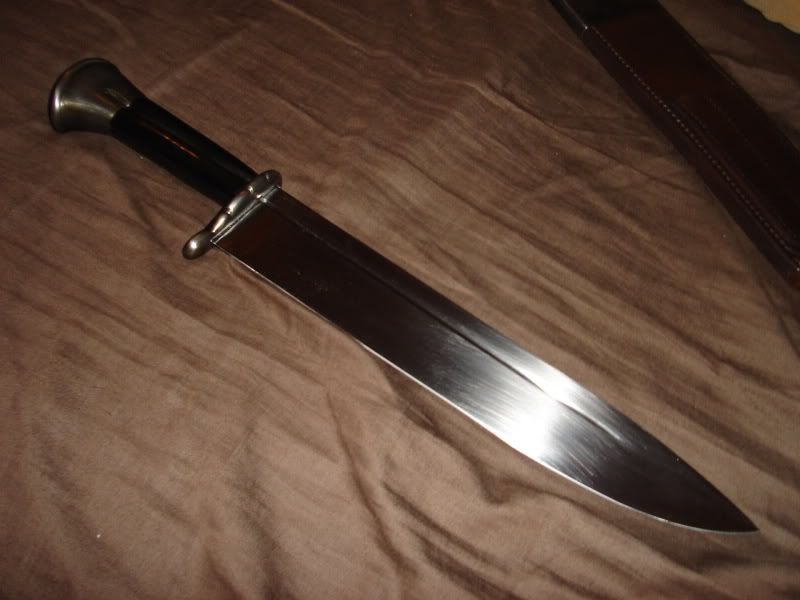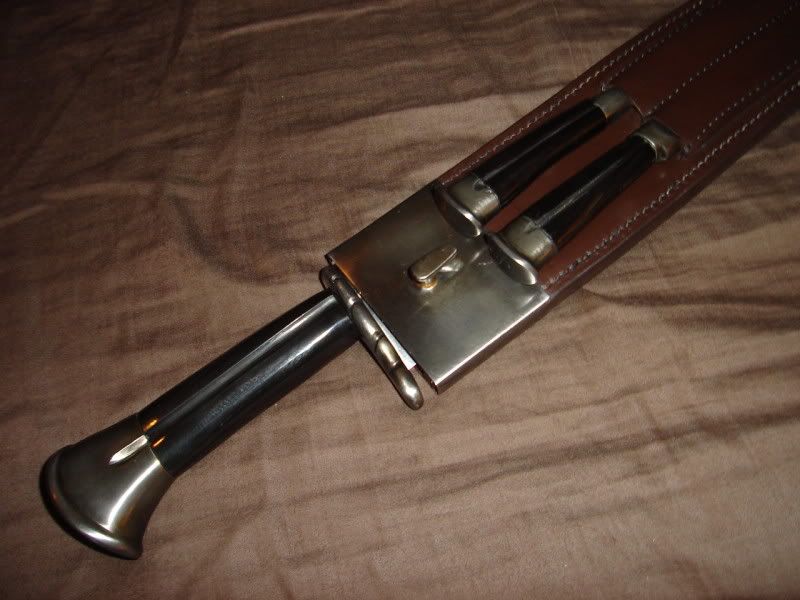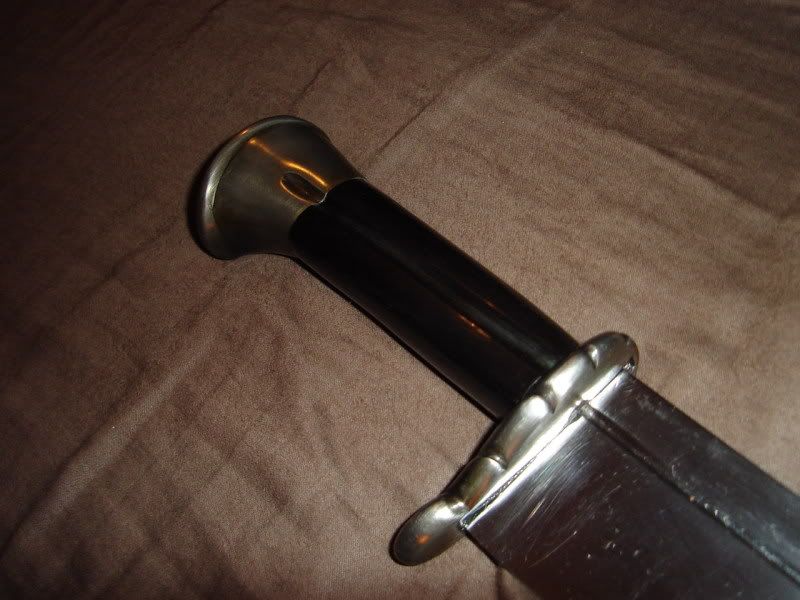Review: Windlass Steelcrafts Hunting Trousse
Oct 23, 2009 4:06:50 GMT
Post by Deleted on Oct 23, 2009 4:06:50 GMT
Windlass Steelcrafts Hunting Trousse

Introduction
For some time, I have been looking for a good medieval period knife to add to my kit. I have plenty of daggers in my collection, but absolutely no knives.
Knowing that I had been looking for some time, my wife took the chance and purchased the Windlass Steelcrafts Hunting Trousse during the recent Deal of the Day sale at Museum Replicas. Normally $160.00, she got it for $80.00.
Unbeknownst to me, she ordered it Saturday and received it on Tuesday. It was well-packaged in the normal Museum Replica fare; no descript cardboard box, packaged tightly in plain brown paper with a cardboard sleeve containing the trousse. The package stayed hidden in her office until today.
I was given the trousse today for my birthday present with additional wrapping of tissue, cards, glitter, bows, and metallic purple bag.
Historical overview
Despite the large assortment of good period daggers on the market today, the knife was actually much more prevalent in medieval European culture. It was an everyday tool, whereas most daggers were designed for personal protection and warfare.
Now, a trousse is not a weapon; it was the term used from the early 14th C until the 1600s to describe the case that might hold items of what the Germans call besteck, or implements for the killing, cleaning, carving, and dining while on a hunting expedition. It is essentially a kit; all contained in one scabbard and sometimes includes a small by-knife, pick, saw and and a large chopping or skinning knife. Not unique to hunting, there were even engineer, mason, and doctor versions of the trousse which included scalpels, compasses, rulers, or marking implements which applied to their profession. Think of it as a antiquated Swiss Army Knife.
Initial Impressions
When I first opened the trousse, my first impression was how heavy the implements were. The large knife is huge - bearing a 12" blade, large handle, and massive pommel. The smaller items are approximately the same size at modern kitchen utensils, though they are fairly heavy too because the larger handles and pommels. All of the items in the trousse felt solid and quality-made right off the bat, making it all that much more pleasing to the hand as well as the eye.
Note on modifications: So that there is no confusion, before taking the photographs, I added a darkened patina with chemical blue to the fittings (pommels, guards, bolsters, chape), darkened the scabbard finish, and refinished the blades with 400g sandpaper. A new trousse will look a little newer than mine.

Statistics
Blade Length: 12.0"
Handle Length: 5.5"
Overall Length: 17.5"
Guard Width: 1.25"
POB (Point of Balance): At Guard
COP (Center of Percussion): 8.0"
Weight: Main Knife: About 1 lbs
By-Knife and Fork: About 6 oz
Total With Scabbard: Slightly Under 2lbs
The Blade
The 12" blade closely resembles the large bowie knives of the 18th and 19th centuries. It possesses a thick spine and wide form, clearly made for heavy duty work. Though too large for smaller tasks on the hunt, the larger blade is good for skinning, cutting larger bones/groups of tendon, and of course - dispatching that larger game that perhaps the arrow did not completely kill (though in most cases - a spear or hunting sword might be better for this, unless you are man enough to hold down a thrashing stag or wrestling boar - like me... ;D)
The larger blade is well-made, with a smooth surface without hammer marks, single fuller, and paper-cutting edge. This is important to note when ordering! My wife did not order the sharpening option - but it came sharpened anyway. It was not marked with the trademark Windlass neon SHARP sticker, so guess what, it's probably safe to say that they have all been sharpened at the forge. Save yourself $15.00 and don't order the sharpening service!
The smaller blade is well-made in its own right, ideal for cleaning/gutting game and fish. This smaller blade was not sharpened, but a few passes with a file and a finish with a diamond hone made it sharp in a matter of about 5 mins.
The fork is well, a fork. It's well made and useful for, well, for eating what you just killed.



The Handle
The handles are all made from polished black buffalo horn with slight caramel streaks that add to the character. The handles are thick and solid, almost like cured ebony. There is no play or rattle in any of the set. There is not grip here, I can see why this sells for $160.00 - its definately made better than some of the Windlass/MRL bowies I have owned in the past.
The finishing on the side grooves of the handles could be a little bit better, as the grooves do not perfectly match the width of the grooves in the pommels. This is purely asthetic however, and is easily overlooked. The Windlass trousse is still made to a much higher standard than the common hunting knife kits I have seen on display in museums.

The Guard
The guards are made of polished steel (though I aged mine with chemical blue). They are heavy duty and well made. Likewise for the bolsters on the fork and by-knife. All good stuff.
The Pommel
The pommels are made from polished steel, like the guards. The larger pommel is huge, durable, and heavy - and would have no problem cracking a boar's skull or hammering in a nail. One thing I found very interesting is that all of these pieces are PEENED, not glued, riveted, or pinned. You can clearly see on the rear of all the the kit that the peens have been ground and finished to a pretty high standard.

The Scabbard
The scabbard is made of thick leather with stitching and welt. It has two component pouches that hold the by-knife and fork. It's pretty standard MRL/Windlass faire and nothing to write home about. One nice touch is that it does have an arming knob on the side of the locket so it can be worn without a frog by simply thrusting it though your belt.
Eventually, I will make a new scabbard that is more period authentic to this type of kit.

Handling Characteristics
The larger knife is well-balanced, with its PoB being right on the guard. It is fairly nimble and quick, just like a contemporary bowie knife. The grip sits well in the hand and feels great, though I fear that when wet it the horn could become difficult to hold on to firmly. The larger blade would not make this type of knife ideal for fighting, but in a pinch, I am sure it worked just fine.
Test Cutting
Yes, I did do test cutting with the larger knife just for sh*ts and giggles. It performed nice even, consistant cuts with water bottles and I was even able to pickle chip a milk jug just to see if I could do it. As stated earlier, the edge is paper-cutting sharp and it works as such. Though probably not intended for this type of offensive posture, the larger knife worked fine against my targets.
The fork and by-knife were not tested.

Conclusions
For the third time in the last year, I have been consistantly pleased with a Windlass / MRL product. My personal history with them has been hit or miss, but I am batting 3 for three this time around. This trousse is ideal for what it is supposed to represent and would be a fine addition to your collection.
Pros
Give a brief list of the aspects of the sword that you believed were the most positive, for example:
- Great heavy duty construction.
- All implements would serve the purpose for which there are intended.
- Good value
Cons
- Polished buffalo horn does not provide a good gripping surface when wet, stag horn would be better.
- Scabbard could be better made.
- $160.00 is a little too high in my opinion, so find it on sale like my wife did.
The Bottom Line
This trousse represents an important fixture of medieval culture. Though not a weapon of war by definition, the implements of the trousse probably seen much more action in practicality than any dagger or sword of its time. If you are looking for an item to complete your medieval hunting kit, then this trousse would work greatly for you.







